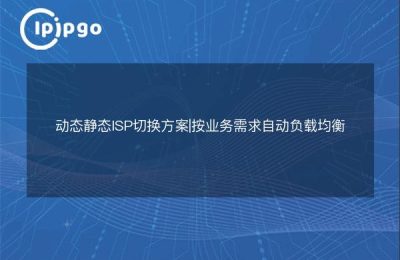
First, why enterprises need dynamic IP proxy pool
In the data collection scenario, the anti-crawling mechanism of the target website is like a "security check", and fixed IP access is like repeatedly using the same ID card to pass the security check. When Python scripts or Scrapy crawlers use the same IP for a long time, the access will be restricted or blocked. Dynamic IP proxy pool is equivalent to assigning different "temporary identities" for each request, which makes the data collection behavior closer to the real user access pattern.
Take e-commerce price monitoring as an example: a company needs to collect data from 50 product pages per hour. When using static IP, it will be recognized as a crawler in less than 3 days. After changing to dynamic IP pool, it successfully realizes stable collection for 30 consecutive days by rotating 90 million+ residential IP resources - this is the typical application scenario of ipipgo proxy service.
Second, the dynamic agent pool to build a four-step method
Step 1: Choose a quality proxy service provider
The quality of the proxy pool depends on the underlying IP resources, and it is recommended that you choose a provider with the following characteristics:
| hallmark | The ipipgo Advantage |
|---|---|
| IP Type | Residential IP share of 90% or more |
| Coverage | Local IP in 240+ countries |
| Protocol Support | HTTP/HTTPS/SOCKS5 full protocols |
| IP purity | Real-life residential network environment |
Step 2: Build the agent scheduling architecture
A combined Redis+Python solution is recommended:
import redis
from ipipgo import IPPool
r = redis.
pool = IPPool(api_key='your_key')
# Update 200 valid IPs per hour
def refresh_ips().
ips = pool.get_dynamic_ips(count=200)
r.delete('proxy_pool')
r.sadd('proxy_pool', *ips)Step 3: Implement IP authentication mechanism
It is recommended to set up double validation: validate availability on first acquisition, and validate twice before use. Use asynchronous validation to improve efficiency:
async def check_ip(proxy).
async with aiohttp.ClientSession() as session.
async with aiohttp.ClientSession() as session.
async with session.get('http://check.ipipgo.com',
timeout=5) as resp: async with session.get('', proxy=proxy,
timeout=5) as resp.
return True if resp.status==200 else False
except: async with session.get('', proxy=proxy, timeout=5)
return FalseStep 4: Setting up the maintenance policy
- Daily automatic purge of failed IPs (mark for elimination if response time > 3 seconds)
- Dynamically adjust IP pool size according to business volume (recommended to maintain 2x redundancy)
- Automatic feedback mechanism for abnormal IPs (returning invalid IPs to the service provider for refreshing)
Third, Scrapy project integration practice
Add the middleware configuration to settings.py:
DOWNLOADER_MIDDLEWARES = {
'scrapy.downloadermiddlewares.httpproxy.HttpProxyMiddleware': 400,
'your_project.middlewares.IPPoolMiddleware': 500,
}Customize the middleware logic (to interface with ipipgo's API):
class IPPoolMiddleware.
def process_request(self, request, spider): proxy = redis.srandmember('proxy_pool').
proxy = redis.srandmember('proxy_pool')
request.meta['proxy'] = f "http://{proxy.decode()}"
# Auto-retry 3 times mechanism
request.meta['max_retry_times'] = 3 IV. Solutions to common problems
Q: What should I do if the response speed of proxy IP is not stable?
A: ①Prioritize local carrier IP (ipipgo supports filtering by ASN) ②Set up smart routing: automatically assign high-latency IPs to non-critical tasks
Q: What do I do if I encounter CAPTCHA validation?
A: ① Reduce the frequency of requests for a single IP ② Work with browser fingerprint randomization ③ Switch different country nodes (e.g., ipipgo's European residential IP)
Q: How to avoid wasting IP resources?
A: Establish a hierarchical use mechanism: use highly anonymized IPs for core services and data center IPs for basic probing, and achieve accurate calling through the IP type filtering function of ipipgo.
V. Sustainable operations and maintenance recommendations
Recommendation for the establishment ofThree-dimensional monitoring system::
1. Success rate monitoring: real-time statistics on the successful request rate of each IP address.
2. Speed monitoring: record the response time variation curve for each IP address.
3. Cost monitoring: statistics on the difference in the cost of IP usage in different regions
By interfacing the monitoring data with ipipgo's API, intelligent scheduling can be realized: when the IP success rate of a certain region drops, automatically switching other regional nodes; temporarily expanding the size of the IP pool when the business peaks. This dynamic adjustment mechanism can increase agent resource utilization by more than 40%.
(Note: The technical solutions mentioned in this article need to be realized with the ipipgo proxy service, which provides comprehensive API documentation and technical support, and the latest integration guide can be obtained directly from the official website.)








